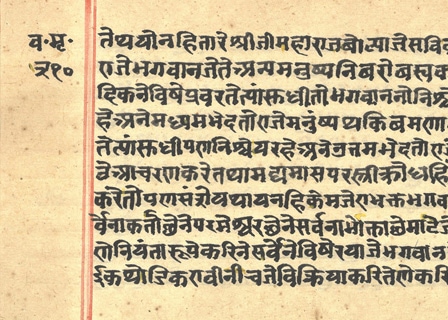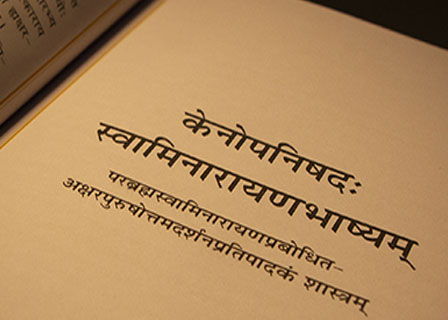The Kenopaniṣad is located within the Tavalakāra Brāhmaṇa of the Jaiminīya recension of the Sāmaveda. Specifically, within the Tavalakāra Brāhmaṇa’s twelve anuvākas, the Kenopaniṣad is found as the tenth anuvāka of the fourth adhyāya.1 Like the Īśāvāsyopaniṣad, its title is derived from the first word of the Upaniṣad: ‘kena.’ The Upaniṣad is divided into a total of four khaṇḍas, with the first khaṇḍa consisting of nine mantras; the second, five mantras; the third, twelve mantras; and the fourth consisting of nine mantras; totaling to thirty-five mantras.
This Upaniṣad focuses on revealing the immense glory of Parabrahman and one’s limited ability to realize this glory. The Upaniṣad teaches a lesson on humility by presenting a narrative of the devas’ victory and their humbling encounter with Puruṣottama. This Upaniṣad also reveals that (1) to truly realize Paramātman, who is described as possessing boundless divine qualities and powers and identified as the master of Akṣara (Akṣarabrahman), and (2) to attain Akṣaradhāman, the divine abode of Parabrahman, it is necessary to (1) seek refuge of the present Akṣarabrahman guru; (2) listen (śravaṇa), contemplate (manana), and repeatedly implement (nididhyāsana) his divine teachings (upadeśa), and (3) mold one’s life according to these teachings. By elaborating on these topics, this Upaniṣad is primarily focused on revealing the nature of brahmavidyā—the knowledge of Akṣarabrahman and Puruṣottama. So that its revelations may be easily understood, the Upaniṣad presents its elaborations of brahmavidyā in the form of a dialogue between a guru and his disciple.





